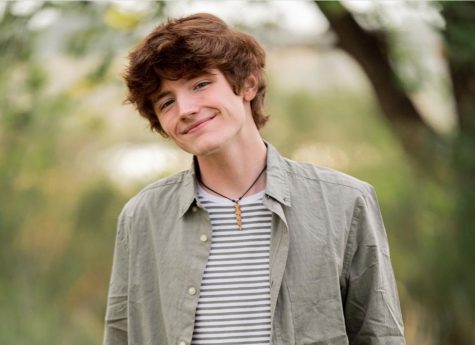All The Bright Places film exceeds expectations
Violet Markey and Theodore Finch pictured left, and right features the book cover.
March 13, 2020
The seemingly unanimous opinion between readers is that most books are better than their film adaptation counterparts. Take the Percy Jackson Series, one of the most disliked movie adaptations of my generation. Of course, there are plenty of exceptions because sometimes the film modifications are insanely better than their literate equivalent including Mean Girls, The Shawshank Redemption, and Silence of the Lambs. Factor in the opinion that some Netflix produced films are terrible compared to other film studio productions, and you get me staring at my TV, wondering if All The Bright Places is worth the watch.
As a kid who grew up rarely watching movies, I could get through a 400-page book within two or three days. So I read almost every teen/young adult novel I could at the time. I was a kid who would rather have her nose stuck in a book instead of watching a movie. Depending on how invested I was with the book. All The Bright Places was only about 388 pages
The All The Bright Places–ATBP for short– movie adaption begins with the two main characters meeting in a similar way as they had in the book. Of course, it was in a different place. Rather than being the Bell Tower at their high school, it is at the bridge Violet Markey’s sister died via car crash. Small indifferences like this bother me less than completely altered scenes, although the Bell Tower scene at the beginning of the book makes for a better opening. ATBP is based around Violet Markey and Theodore Finch working together on a project for one of their classes. They are meant to find and write about the great wonders, or ‘wanderings’ of their small town in Indiana.
Violet, played by Elle Fanning, has a fear of cars due to her sister’s death nine months earlier. Theodore, who goes by Finch and is portrayed by actor Justice Smith, finally convinces Violet to drive to a wandering that is over a hundred miles away. This is truly the beginning of Violet and Finch’s relationship, as she recollects being in the car during the crash.
It is not stated that Violet has Post Traumatic Stress Disorder after the crash, but the subtle hints show she is at least suffering from some form of stress due to the incident. A main plot point within the movie and book is dealing with mental illness. Violet suffers from PTSD, while Finch deals with Bipolar Depression. He goes through periods of being “awake”, where he spends days in manic episodes. The film ending is filled with heartbreak and is pretty much on the same emotional level as the novel’s ending.
Overall, All The Bright Places is a pretty decent film adaption to the book. Personally, I would suggest reading the book before watching the movie, but if that is not something you enjoy doing then the film is a good counterpart.


















Kristin • Mar 25, 2021 at 10:29 pm
Finch’s character suffers from Depersonalization (Derealization) Disorder, not bipolar. He clearly talks about being outside his body, not being able to feel anything like he’s not alive, he blacks out and goes to the dark place, he fights to”stay awake” by focusing on specific thoughts (post its) and running places (sensory input).